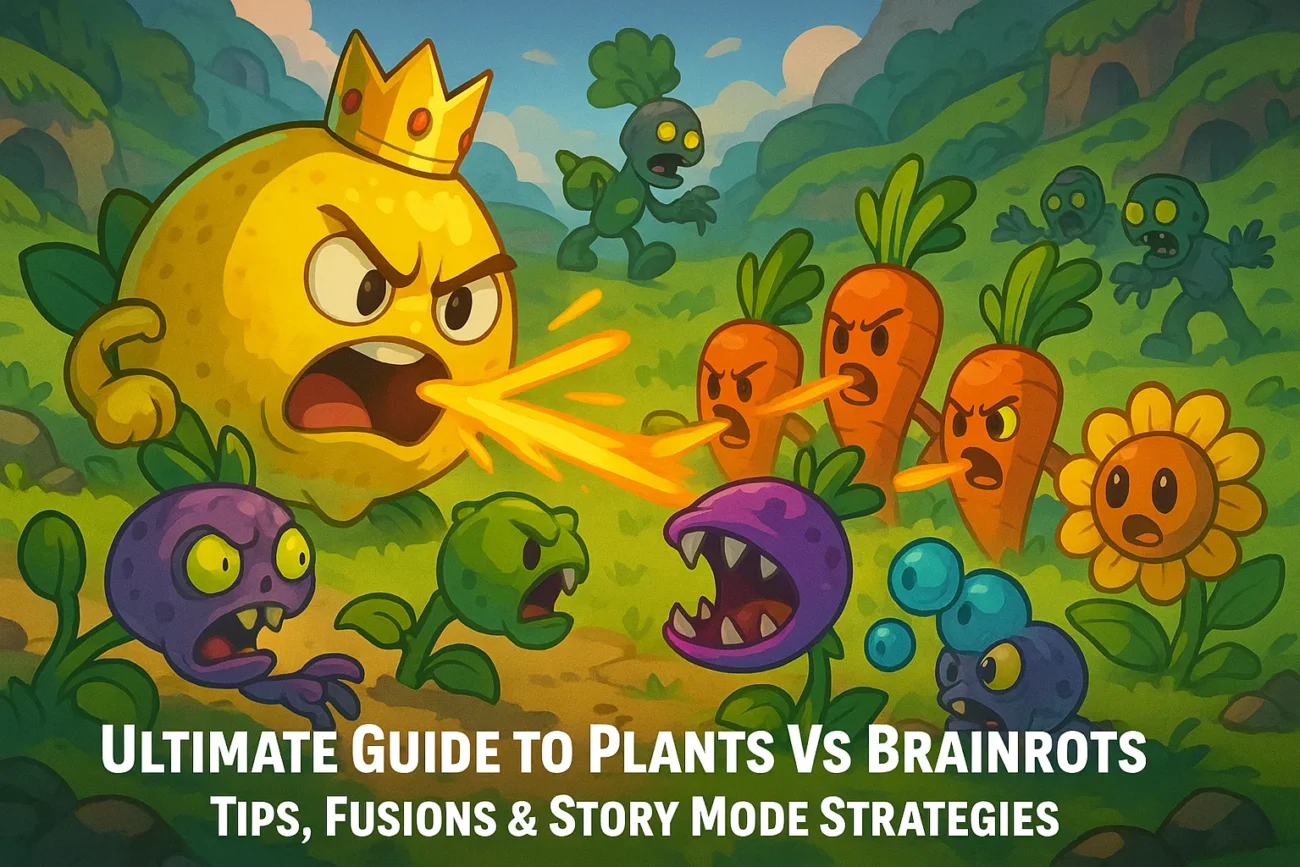If you’ve spent enough time grinding through Plants Vs Brainrots, you already know the game isn’t just about placing plants and hoping for the best. It’s a constant mix of experimenting, strengthening your lineup, and trying to survive waves that feel way stronger than what you dealt with a few hours earlier. In the transcript above, the player goes through exactly that journey: testing new plants, searching hidden areas, fusing monsters, and trying to push further in the notoriously difficult story mode. This guide breaks down the key takeaways and turns them into clear advice for improving your own gameplay.
Building a Strong Early and Mid-Game Setup
One of the first things the video shows is how important it is to check the damage-per-second levels of each plant you place. Many players tend to rely only on legendary or large-sized plants, but the actual value comes from how much damage a plant contributes per second, not just how impressive it looks. For example, several mid-tier plants in the transcript—like Banter or the upgraded carrot varieties—actually outperform bigger plants in certain layouts.
If you’re still early in the game, I recommend testing different line combinations. Some players even choose to buy Plants Vs Brainrots Plants when they want a boost for resource farming. While this isn’t required, it can speed up your progress, especially if you’re preparing for story mode.
Managing Money and Upgrades Efficiently
Money is always tight in Plants Vs Brainrots, and the player’s struggle in the transcript is something everyone faces. Even with trillions of coins saved up, high-level fusions and rare plants can drain your resources quickly. That’s why you need a system for deciding what to level and when.
Focus on plants that provide consistent income or long-term scaling. King Lemon Seed is a good example. Even though the player rolled a version without upgrades, its growth potential is strong once you invest in it. The big tip here is patience: many high-end plants perform best when leveled naturally over time instead of forcing upgrades too quickly.
I also recommend setting aside certain lines exclusively for farming, even when pushing story mode. It keeps your economy stable so you’re not stuck later grinding low-level areas.
Exploring and Searching for Secrets
One interesting part of the transcript is the player trying to find hidden areas—checking caves, climbing mountains, and even attempting awkward jumps. Not every secret area leads to rewards, but the game often hides alternative paths, plants, or fusing components behind strange or unexpected places.
If you’re someone who likes collecting rare species or unlocking hidden upgrades, it’s worth exploring every corner of the map. The game isn’t always obvious about where things are located, and sometimes even a dead end gives you hints for later areas.
Fusion Strategy and Efficient Crafting
Fusion is one of the most important mechanics in Plants Vs Brainrots, especially if you want to reach the endgame without too much struggle. The player in the transcript spends a lot of time checking their collection, trying to combine high-quality components, and searching for materials like Myaozol or other rare fusion parts.
Here are a few tips based on what we can learn:
- Don’t craft immediately just because the option appears.
Sometimes it’s better to wait until you have multiple pieces of the same tier to ensure you get the best possible outcome. - Keep track of which plants have natural passive bonuses.
Some plants improve dramatically after fusion, while others barely scale. - Always fuse when you have duplicates.
It increases your potential damage output without extra cost.
Players who don’t want to wait for rare components often browse around for Plants Vs Brainrots items for sale from third-party marketplaces. It’s not required and you should always be careful, but some players find it convenient for skipping slow early progress.
Surviving the Story Mode Difficulty Spikes
The toughest part of the transcript is the story mode section, where the player struggles heavily with waves that spawn faster and stronger than expected. This is normal—story mode has some of the sharpest difficulty increases in the game.
Here’s how to make it easier:
- Use cards that boost attack speed or damage on your highest-DPS plants.
Even a small increase can turn an impossible wave into a manageable one. - Leave parts of the line empty intentionally, which can sometimes change spawn patterns or give you breathing room.
- Don’t panic-spam low-damage plants.
This is a common mistake. One strong plant with buffs often outperforms five weak ones. - Prepare for the unexpected.
Because of how chaotic story mode can get, always keep at least one card that gives you control—slowing enemies, freezing them, or wiping smaller waves.
At the end of the transcript, the player gets overwhelmed, but also slowly improves. That’s the core of Plants Vs Brainrots: slow progress, adapting, and getting stronger one plant at a time. Even experienced players fail waves repeatedly.
Late-Game Challenges and Endurance Grinding
As the video shows, high-level tasks like fusing 25 Blierots or unlocking Galactic-tier plants require long grind sessions and proper resource management. The player jokes about losing track of time, which is something most players experience in the late game.
If you’re aiming to reach those stages smoothly:
- Maintain at least one dedicated farming area.
- Don’t rely only on big legendary plants; spread out your lineup with mid-tier units that have good DPS per second.
- Save high-tier materials until you have a clear fusion goal.
- Check marketplaces like U4GM if you ever need to compare prices or evaluate item value; many players use it as a reference.
Plants Vs Brainrots can be chaotic, funny, frustrating, and surprisingly deep. The transcript clearly shows how much trial and error goes into improving your setup and pushing further into harder stages. If you take the time to test plants, manage your money, explore hidden paths, and fuse wisely, you’ll see consistent progress even in the toughest modes.
